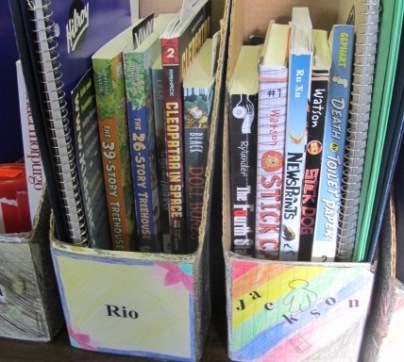On the last day of summer before school begins tomorrow, this post is a reminder that those “done” libraries might not be completely done.
In my room, books now reside on shelves like this:
Instead of all over the room like this:
But still, things aren’t done. Now, I am sourcing. Ideas. Book lists. Wisdom. Experience. Preferences. So that as the year rolls out, I can add titles to our classroom library that my students will love.
How do I do this? A few ways . . .
Any kids who come into my vicinity get asked What are some of your favourite books? (if they are Grade 3 age-ish) Do you remember the books you loved a few years ago? (when they are a little older) If I am lucky enough to have children visit my library (usually the children of other teachers in the school) I drag them into my classroom and prompt: Look carefully at this library, it’s for a Grade 3 class. What do you think is missing? Are there books you think shouldn’t be here? What books would you be excited to read? I spy on children at the bookstore and the library that look about Grade 3 age. What do they gravitate towards. What makes it into a pile? What is pulled off the shelf? Child opinion? It’s golden!
I also ask colleagues – teachers, literacy coaches, teacher librarians – those I know in person and those I know on line – about books their students love. I give lists of series and ask if these were read in Grade 3 classrooms. This helped me move some titles out of my library that my Grade 4s and 5s read. Some things I moved out and then moved back. Asking questions helps me learn from the experiences of others. What’s popular? What is constantly read? What books do kids ask for again and again?
I wander through bookstores and get the opinion of my favourite booksellers. What’s selling? What are kids this age often looking for? I love visiting bookstores with a friend who is a teacher librarian – we trade recommendations and I snap pictures as we talk. Later I look up titles and series we talked about and read reviews.
I also zoom in when other teachers tweet photos of their classroom libraries or share photos on their blogs. Are they teaching a Grade 2-4 age range? What books are in the bins, on the shelves and best yet, in students’ hands?
Another great source? The lovely organized book shelves of my friend’s Goodreads accounts. Many of us organize our books on book shelves so I check out those shelves titled Great for Grade 3, Transitional chapter books, Classroom Favourites, etc. I have scrolled through all of the posts about transitional chapter books that Alyson Beecher and Michele Knot post. These #Road2Reading challenge posts are a fantastic source for those teachers teaching primary classrooms! My reading community is my primary source for new titles. I read lots of blogs and pay attention on twitter to relevant books being discussed. Certain hashtags are really worth following: #IMWAYR, #nfpb2017, #titletalk, #WeNeedDiverseBooks.
Sometimes, I am looking for very specific books. Right now, I am paying attention to what is getting Caldecott buzz so I can begin to put together my Mock Caldecott list. Often, I come across books I love while at the bookstore but I also pay attention to what is tagged on Caldecott lists on Goodreads and love checking out the list that Margie Culver keeps adding to: Mock Caldecott 2018. Margie’s blog Librarian’s Quest is an incredible source for book titles.
The most important source? My students. The students I haven’t yet met and so these recommendations have yet to happen. I am leaving physical and mental room for what our library will need. Once these children begin to read in my room, I will start to pay attention.
What will this particular group of students need? Love? Grow into?
More early series to build fluency? Chapter books with more complex themes? Nonfiction titles about . . . ? Titles with children who . . . ? Stories about places like . . . .?
This is what I will learn in the next months.
For our library to grow, all of these sources will be considered carefully and considered often.
Wishing everyone a happy reading journey!
Note: This is the fifth and final post in a series. Missed the previous ones?
Summer Maintenance in the Classroom Library. Step 1: Relocate
Summer Maintenance in the Classroom Library Step 2: Weed
Summer Maintenance in the Classroom Library. Step 3: Additions
Summer Maintenance in the Classroom Library. Step 4: The details





























 Let the sorting begin!
Let the sorting begin!




